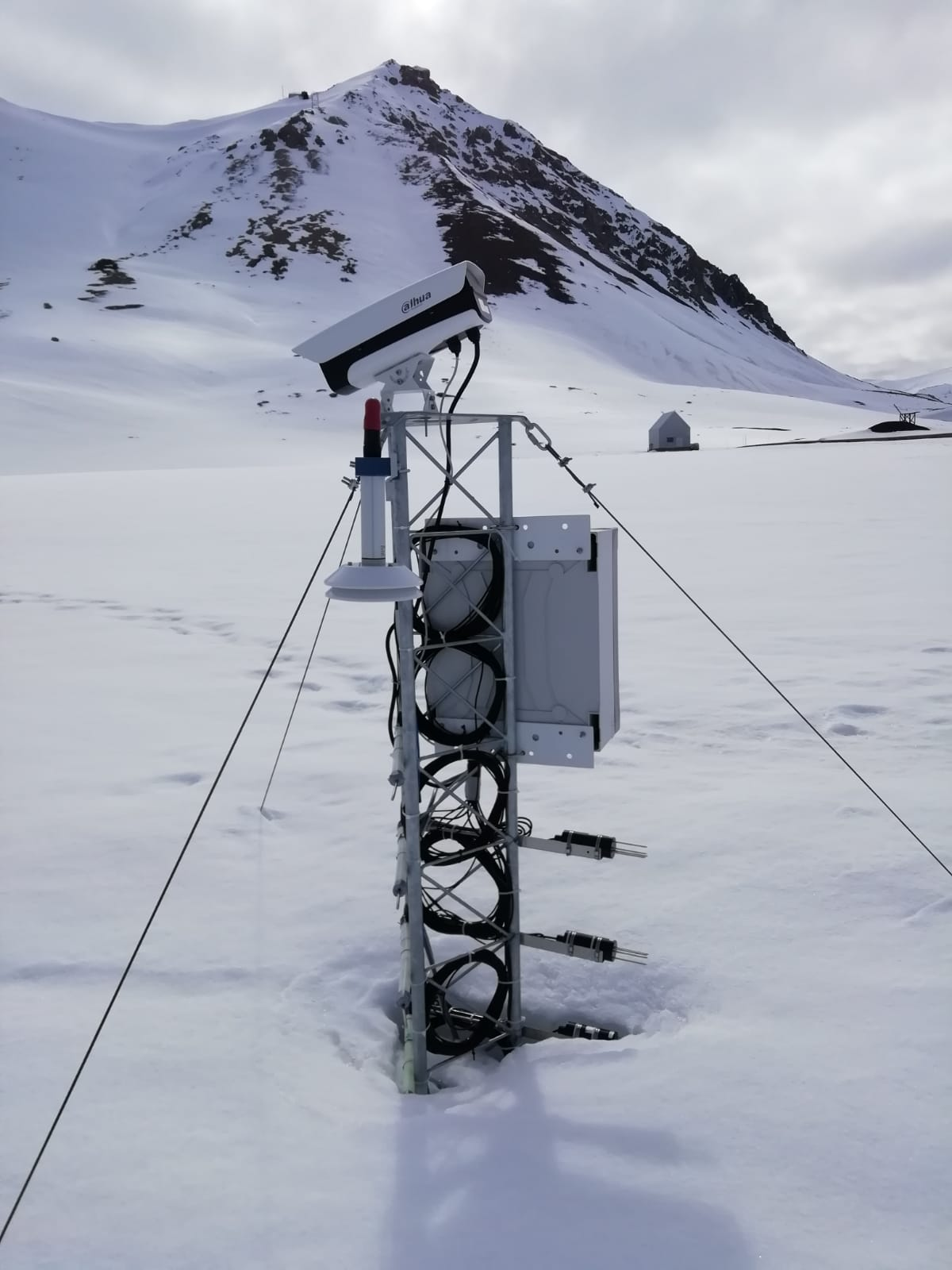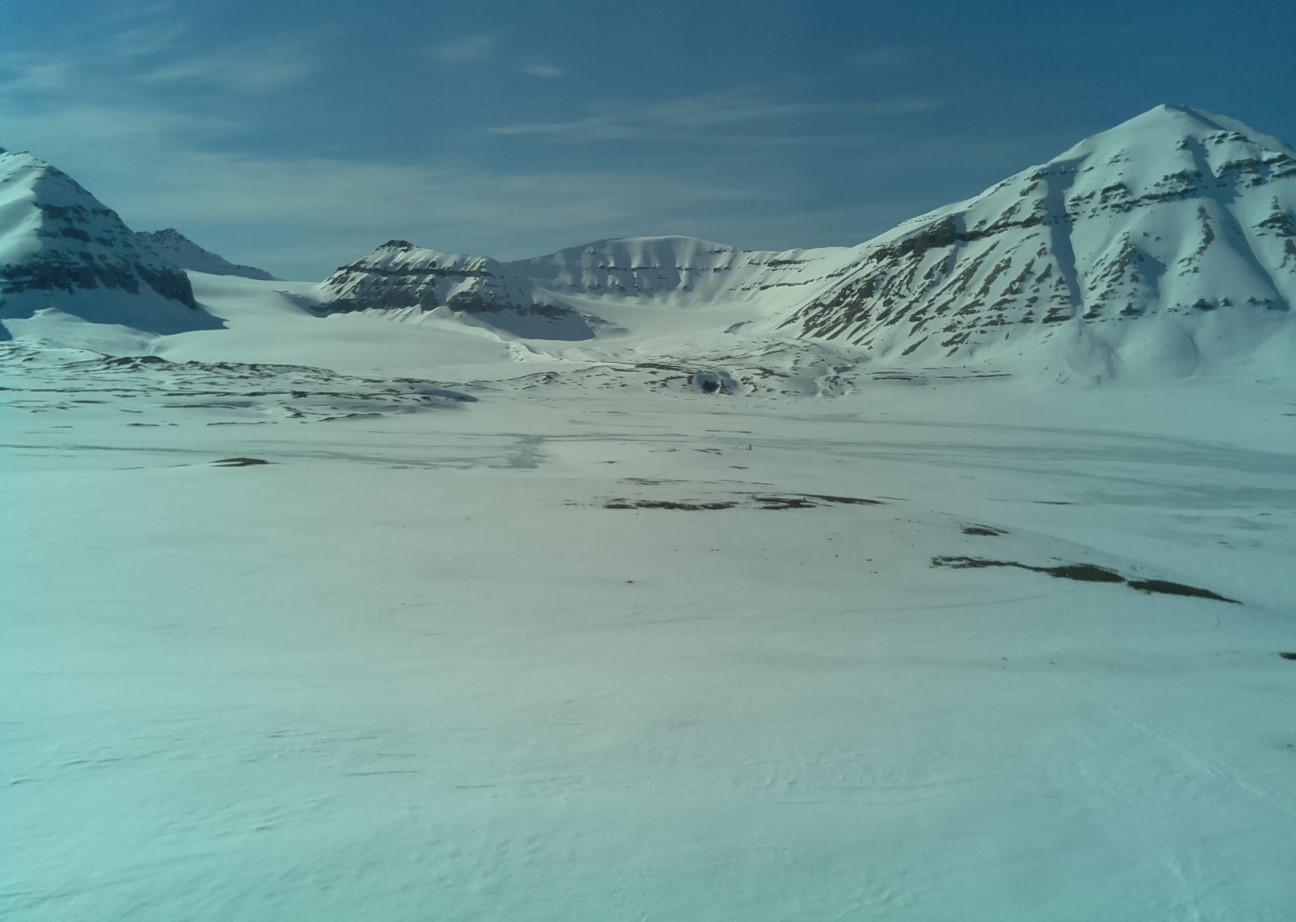Environmental monitoring facilities
Type of resources
Available actions
IADC Research Activities
Topics
Keywords
Contact for the resource
Provided by
Years
Formats
Representation types
Update frequencies
status
Scale
-
Snow water equivalent at the Gruvebadet Snow Resarch Site
-

Chronobiology of polar organisms (Chronopolar) Monitoring water parameters in surface and deep (3.0 meters) using DS18B20 + rasberry-pi. Sample collection: Lepidurus arcticus.
-

This dataset comprises measurements from a moored single-point acoustic current meter, collected by the Mooring Dirigibile Italia (MDI), which is managed by the Institute of Polar Sciences of the National Research Council (CNR). The data was gathered at Kongsfjorden, Svalbard Island, since 10 September 2010. This dataset is also part of the SIOS-Svalbard Integrated Arctic Earth Observing System, developed to observe the impacts of climate change, including the rapid loss of sea ice cover, the retreat of local glaciers, and the Atlantification of Arctic seas. Measured properties are: subsurface temperature and subsurface currents. The acquisition of this time series data is still ongoing and will continue, bolstered by the inclusion of this infrastructure within the framework of the Italian PNRR project ITINERIS. This ensures sustained data collection and further enhances our understanding of the observed environmental changes.
-

The automated nivological station was installed in November 2020 in a flat area over the tundra about 80 meters far from the Gruvebadet Atmospheric Laboratory and nearby a snow sampling site from where weekly snow samples are collected for chemical analysis. Sensors have been calibrated by their companies before installation and are connected to a datalogger for continuous acquisition. For all the parameters, data are logged with 10-minute time resolution and then averaged over 1 hour. This activity is carried out by the Aldo Pontremoli Centre part of the Joint Research Agreement ENI-CNR.
-

This proposal will focus on eutrophication, contaminants, marine litter and underwater noise descriptors of the MSFD. Vertical acquisition in 18 CTD station in Kongsfjorden with water sampling at 2-3 depths (surface, intermediate, bottom) for nutrient and pH analyses of sampled water in the lab
-

terrestrial Photography ApplicationS on Snow covEr in Svalbard Project start: 2018-04-15 - end: 2021-12-31 The purpose of this activity is the development of a new snow product focused on the estimation of the fraction of snow cover in selected sites at different spatial resolutions. This dataset will be aimed to support the estimation of cryospheric information using remotely sensed data, with a particular attention to data obtained in the framework of the Copernicus program. The availability of this dataset in a natural laboratory such as Svalbard islands will support the reduction of the gap between remotely sensed data and modeling activities. This added value will be very important considering the higher spatial resolution of the sensors recently deployed. The dataset will be based on re-using data obtained from public repositories such as the digital elevation model of Svalbard, the available webcam imageries in Svalbard and satellite products from Landsat, Sentinel and MODIS missions. All the available data will be integrated in order to estimate the fraction of snow cover, at different spatial resolutions, for each satellite mission. These estimations, computed at different sites in Svalbard islands, will offer the opportunity to better integrate results obtained by remote sensing with modeling and air-snow interactions studies. Particular attention will be devoted to the formalization of agreements with raw-data providers in case of not-public licensing policies.
-

Time series of marine particles fluxes and its compositions (Time and spatial scale: 15-90 days, fixed depth 83 m, 17 m above bottom). Flux of total mass, TMF, (g m-2 day-1) - Organic Carbon, OC, (per cent) - Calcium carbonate,CaCO3, (per cent) - Biogenic silica, Opal, (per cent) - Lithogenic material, Litho, (per cent) - Delta 13C, d13C, (per mil)
-

terrestrial Photography ApplicationS on Snow covEr in Svalbard: Evolution of the fractional snow cover in the Broggerdalen area using ground-based cameras located at the Climate Change Tower in the Svalbard archipelago. Project Start date: 2018-04-15 End date: 2023-12-31
-

Continuous Vis-Near IR Characterization of snow-ice surface in Ny-Ålesund (SnowIceCReM) The activity foreseen for 2015-2020 includes: continuous full-range reflectance measurements; continuous multispectral observations; ground-truth survey on snow surfaces. The first part of the activity is attempted to replicate the experiment carried out in 2014 where a VNIR spectroradiometer were deployed at the CCT. Hardware upgrades will be coupled with the addition of some position and optical reference targets. An hemispheric webcam will acquire high resolution sky and ground images to support the experiment in terms of cloud and snow cover/roughness characterization, and to provide a quality check of the rotating support position by means of the above mentioned specific targets. The availability of such accessory information will help on selecting a homogeneous spectral albedo dataset. The same quality check approach will be used also for the deployment of a second instrument that will be developed in order to obtain fixed band albedo at 860, 1240 and 1640 nm. Both measurements will be hemispheric, in the 350-2500nm wavelength range. While the first set up obtains asynchronous spectral albedo, the second one provides synchronous spectral albedo on bands selected considering sensors deployed on satellites. The final task will be persecuted with a ground-truth survey focused on calibrating the two different hemispherical receivers with bidirectional observations.
-

The Brøgger peninsula located in the north-western sector of Svalbard, is rich in shallow lakes, very different in morphology, height from sea level, composition of lake sediments, seasonal snow cover and presence/absence of migratory avian fauna in their catchment areas . In 2022, as part of the EcoClimate project (PI Prof. Edoardo Calizza), the research unit of the Institute of Polar Sciences of Messina set up a first series of sensors (Temperature; light) in 8 lakes spatially distributed at different heights from the sea and with different inputs of organic and inorganic substance. The observatory is currently in its second year of measurements.